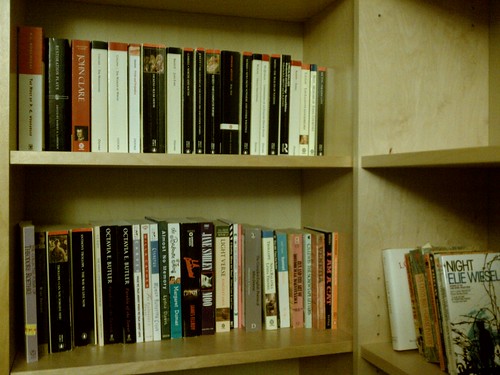So, this weekend was my first ever time vending at a craft fair! Check out my lil’ table there.
The venue was the Lusardi Building at San Pedro Square Market, and the Native Revival Nursery folks organized and ran things. Things were a little chaotic as we were getting set up, but once the fair got rolling, it was great. Lots of people came through in spite of the rain, including a bunch of my friends! Yay! Thanks again for coming, y’all!
I got a ton of compliments on my books, and sold almost a dozen! This was way better than I expected to do, and enabled me to not only cover the cost of the table and materials/labor for the books I sold, but also the cost of the materials I got to prepare for the fair as well! And have a little left over! WAHOO!
This was also the debut of the amazing poster I got from Calyx Design about how I make my books! Very exciting! Richard even did a post about it explaining the process a little. Very cool! He was amazing to work with, and I cannot recommend him highly enough. Seriously, if you need a designer, work with this dude. He is AH MAY ZING.
Anyway. Here’s the poster in action:
Above it are three demo books showing different stages in the process, so I could give a more detailed, hands-on explanation for the curious.
Let’s continue the tour of my table, left-to right! Here are some of the books on display:
I got a little basket for the pocket notebooks:
And of course there were even MORE books on display around it:
Then there was my mailing list sign up (you can sign up too, just use the little form in the right-hand column of the blog!). I also, thanks to a suggestion from a friend, set up a book people could write in if they felt like it.
This turned out to be genius — people loved the feel of the paper, had fun thinking of things to write, and in one case it literally made a sale — a very nice lady who only uses fountain pens was skeptical that the paper was thick enough for the ink to not go through it, so I invited her to try writing in the test book. When the ink did not, in fact, go all the way through the paper, her whole face lit up and she spent quite some time choosing a book. She also signed up for my mailing list and took a card. I think I’ll be hearing from her again!
Plus, people wrote some really nice things in the book:
It was a great experience overall. I also brought lots of materials (you can see my punching cradle and laying press on either side of me, as well as some in-progress text blocks), and got a fair bit of work done. Win all around.
I had a lot more fun than I expected — the day flew by (helped in part by a couple friends who came and helped me so I could do things like eat and run to the bathroom!). I’m still tired two days later, though — I had a very busy Saturday and wasn’t rested going into the fair, and then the fair itself took a lot out of me. I have to remember to do more self-care before and after next time I vend!
Speaking of which, it’s looking like I might be doing a mid-week craft fair next week at a local school — sign up for my mailing list and you’ll be the first to get the full info.




















































